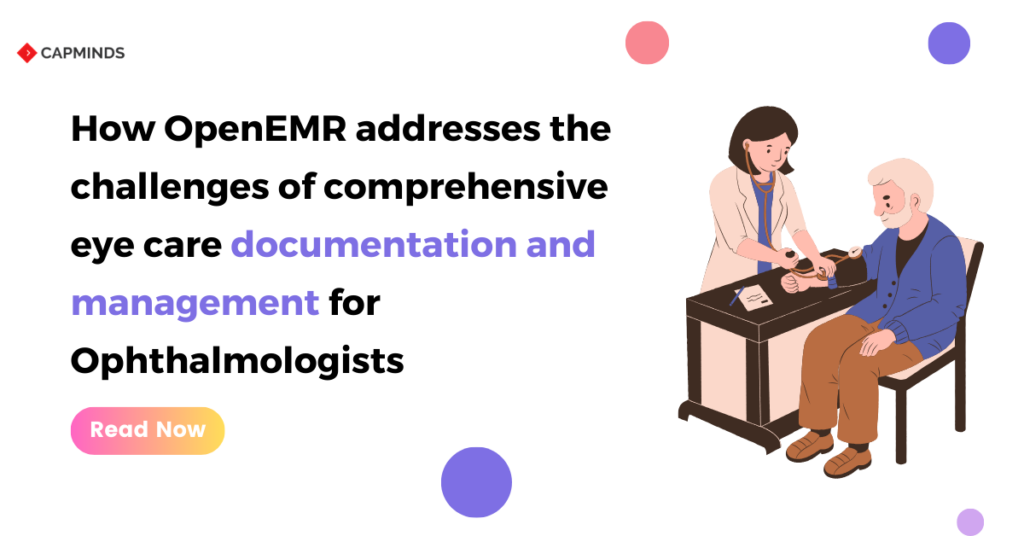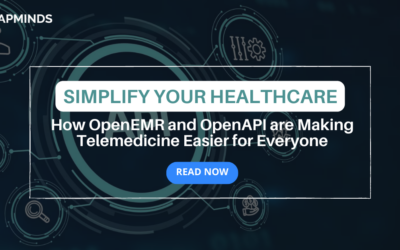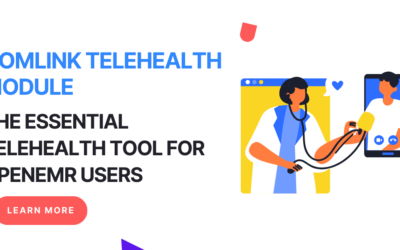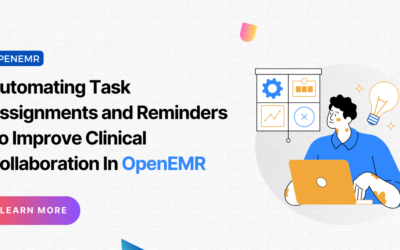How OpenEMR addresses the challenges of comprehensive eye care documentation and management for Ophthalmologists
Effective documentation and information management is a major pain points for ophthalmologists and eye care practices. Comprehensive patient records containing clinical notes, test results, imaging scans, treatment plans, and correspondence must be accurately recorded, securely stored, and made accessible to authorized healthcare providers.
However, many electronic health record (EHR) systems fall short of catering to the specialized needs of eyecare practices.
OpenEMR is an open-source EHR and medical practice management solution that alleviates many of the documentation and workflow challenges faced by ophthalmologists.
Developed by a global community of physicians, technologists, and healthcare IT experts, OpenEMR includes customizable features and enhancements for optimized eye care delivery.
Real-time Reporting and Analytics for Quality Care
With stringent government regulations around meaningful use criteria and quality reporting mandates, ophthalmologists need robust reporting and analytics from their EHR system.
OpenEMR offers intuitive real-time reporting and graphs to help analyze practice patterns and outcome measurements. This provides valuable insights to improve clinical quality, patient safety, and practice efficiency.
For example, the following SQL query generates a report on the number of diabetic retinopathy cases diagnosed each month:
SELECT date_format(encounter_date,'%m-%Y') AS Month, COUNT(*) AS 'Number of Diabetic Retinopathy Cases' FROM diagnosis WHERE description LIKE '%diabetic retinopathy%' GROUP BY Month;
Configurable Documentation Templates
OpenEMR provides customizable documentation templates that simplify clinical workflow for ophthalmologists. Pre-built forms, charts, and order sets can be created for detailed eye examination notes, operation reports, referral letters, prescriptions, and more.
Embedded clinical decision support alerts also guide physicians in reconciling medications, flagging allergies, and adhering to best practice protocols. Automated ICD-10 and CPT coding aid accurate billing and reimbursements.
Integrated Imaging and Diagnostics
The ability to embed images and scans directly into patient records is a critical need for ophthalmology clinics dealing with OCT, fundus photography, visual fields, and other ophthalmic imaging studies.
OpenEMR seamlessly integrates diagnostic reports and medical images using HL7 protocols and FHIR interoperability standards. Referring physicians can digitally transmit and access these integrated patient records through the built-in patient portal.
Scalable and Interoperable Platform
Being an open-source project supported by a large network of developers and implementers, OpenEMR can flexibly scale from small practices to large multi-center hospitals.
Its modern web interface and structured database make OpenEMR highly customizable to local workflows while remaining up-to-date with the latest healthcare interoperability requirements.
The ONC has certified multiple versions of OpenEMR for meeting industry standards in data portability, privacy, and security. This guarantees compliance with regulations around meaningful use incentives and streamlined accessibility for patients.
With its specialized eyecare features for clinical documentation, practice management, integrated diagnostics, and scalability, OpenEMR successfully addresses major EHR challenges plaguing modern ophthalmology clinics.
Its open-source heritage fosters rapid feature enhancements as the practice needs and healthcare regulations continue to evolve.
As a trusted technology partner, CapMinds provides reliable guidance to optimize your operations, boost productivity, and gain a true competitive advantage by leveraging the latest enterprise technologies. Our collaborative engagement model focuses on your key business priorities.




